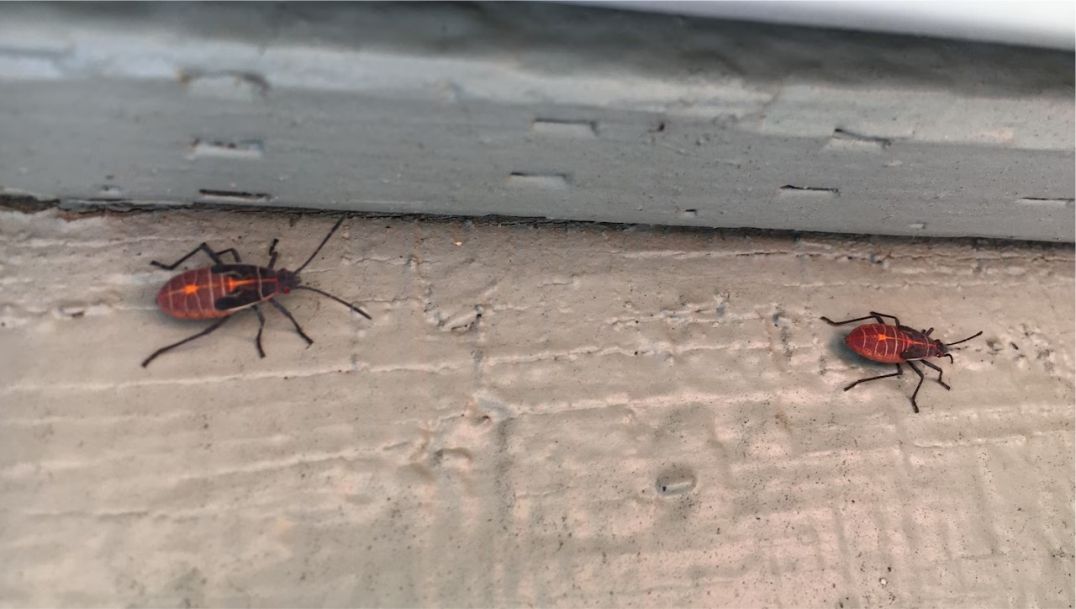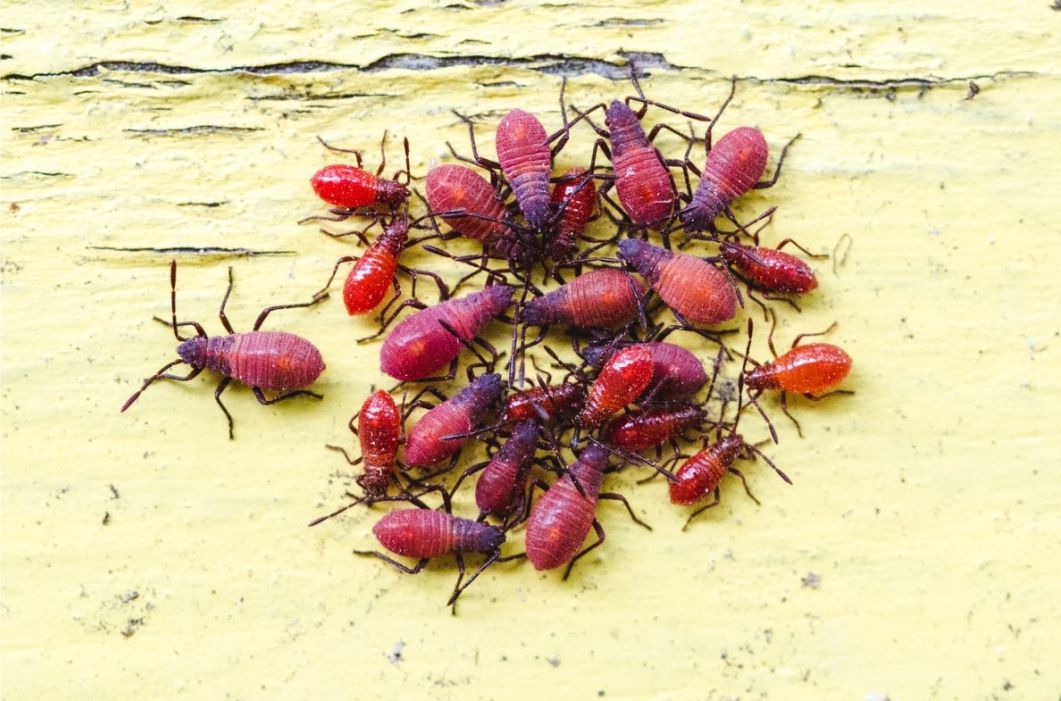What are Those Red Bugs with Black Markings You Keep Seeing? Everything About Boxelder Bugs
You might have come across clusters of red bugs with black markings crawling on your home's exterior or gathering near windows. They appear in hundreds during certain times of the year. They might look alarming, but the real thing is understanding what these bugs are and why they are attracted to your property. This guide will help you explore more about these red and black insects and how to prevent and control boxelder bug infestations.
What Are These Red Bugs with Black Markings?
The red bugs with black markings you keep seeing are most certainly boxelder bugs. These bugs have developed a reputation for being one of the most common nuisance bugs in residential properties. These bugs have beetle-like appearance, but they belong to the Rhopalidae family, which differentiates them from actual beetles. Here's how to identify them.
Features to Identify Them
Boxelder bugs have elongated, oval-shaped bodies with bright red margins and lines running on their bodies. These red markings can be seen as a V-shape or an X-pattern. They have prominent red eyes, which add to their characteristic appearance. The immature bugs, nymphs, appear quite different from adults. They are bright red in colour and have small wing buds.
Where To Find Them
Boxelder bugs got their name from their host tree, the boxelder tree. They are primarily seed feeders, using their mouthparts to suck nutrients from seeds, leaves, and tender plant tissues. While they can be seen throughout Canada, they're particularly abundant in areas with large populations of boxelder trees.
How to Distinguish Them
Boxelder bugs can be confused with several other bugs, such as stink bugs, which have reddish markings and emit a strong defensive odor when disturbed. Boxelder bugs, on the other hand, have a milder smell. People might also confuse Boxelder bugs with lady beetles, which are dome-shaped and much smaller. Unlike boxelder bugs, lady beetles have spots rather than stripes and do not exhibit the clustering behavior.

Why Do You Keep Seeing Red Bugs with Black?
The reason why you keep seeing boxelder bugs in large numbers can be explained by their seasonal behaviour. Here are the major reasons why boxelder bugs are seen in residential spaces.
Seasonal Behavioural Pattern
During spring, when temperatures are warm, overwintering boxelder bugs emerge from their hiding spots, become active, and start seeking food and mates. During the hot, dry summer, these bugs are typically found outdoors and are not really a nuisance to homeowners. During the fall, boxelder bugs are seen to gather in enormous clusters in preparation for their migration indoors. This is when you see hundreds or thousands of these red bugs with black markings on the exterior of your home.
Attraction to Residential Places
The biggest reason you might be seeing these bugs a lot is the presence of boxelder, maple, or ash trees. Another reason why you might see these bugs during fall is their love for sunlight and warmth, particularly before finding winter-pest-prevention-guide. This is also why you see boxelder bugs in your home, because these cold-blooded insects are seeking warmth. If your home has poorly insulated walls, vents, or gaps around windows, there is are good chance of bug invasion and infestation.
Are Red and Black Bugs Dangerous?
If you are a homeowner, you might feel concerned about the safety of your home and family. Pest infestations are a nuisance, and it can be really challenging to remove them from your home once they invade. The good news, however, is that boxelder bugs are among the least harmful pests. Boxelder bugs are nuisance bugs rather than dangerous ones. Here are some of the concerns boxelder bugs may raise about your health and property.
Health Concerns
Boxelder bugs rarely bite humans. Boxelder bugs have piercing-sucking mouthparts designed for feeding on plant seeds and tissues and not for biting. However, in rare circumstances, they defensively bite humans when handled roughly. In such cases, a minor reaction similar to a mosquito bite may occur. Other than this, these bugs do not transmit diseases or carry pathogens. Sensitive individuals may experience minor allergic reactions to the bugs, which exhibit as mild skin irritation or eye irritation. Boxelder bugs are generally safe to pets. Their unpleasant taste usually discourages pets from eating them.
Property Damage
Boxelder bugs do not cause any structural damage to your home. They do not damage wood, insulation, or building materials, nor do they chew through structures. Boxelder bugs are not known to feed on fabrics, upholstery, or stored materials. These red bugs with black markings can cause cleanliness and staining issues that make them unwelcome.
Staining Issues
The most significant property concern with boxelder bug infestations relates to their excrement and the staining. When present in large numbers, these red bugs with black markings can create noticeable stains on walls, window sills, curtains, and other surfaces. Boxelder bugs' droppings accumulate and can leave visible staining. The excrement can prove challenging to clean completely. These stains create an unsightly appearance and require

How to Prevent Red and Black Bugs from Entering
Prevention techniques are by far the most effective and least labour-intensive approach to managing boxelder bugs. Since these pests seek indoor shelter, implementing preventive measures before can save significant time, effort, and frustration.
Sealing Entry Points
The most important aspect of pest prevention is sealing entry points in your home so that these insects simply cannot find a way inside. Begin by inspecting all window frames for gaps, checking both interior and exterior sides. Apply high-quality caulk to seal openings. Install or replace worn weather stripping. Pay special attention to garage doors, which often have significant gaps at the bottom. Inspect vinyl, wood, and other siding for gaps and fill small gaps with appropriate caulk or repair or replace them.
The ideal time to conduct exclusion methods is late summer or early fall, before boxelder bugs begin their migration inward. If you see large aggregations on your home's exterior, bugs have likely already found their way inside through any available openings.
Landscape Management
One way of controlling boxelder bugs is by managing your house's landscape. Engage in tree pruning, which helps to keep tree branches trimmed back so they don't touch or overhang your home's exterior. Boxelder bugs seek shelter in numerous outdoor locations before attempting to enter homes. Eliminate wood piles, stacks of lumber, piles of rocks or stones, unused equipment or machinery that serve as potential outdoor harborage sites. Remove leaves regularly during fall to create a dry zone that is less attractive to insects. A dry, exposed perimeter around your home is less inviting to boxelder bugs.
Professional Pest Control Solutions
For persistent infestations or preventive treatments, consider consulting with professional pest control services. Expert exterminators can provide targeted treatments, comprehensive exclusion services, and seasonal pest monitoring to keep your home bug-free year-round.
Conclusion
Understanding the red bugs with black markings empowers you to manage them effectively. These bugs follow predictable seasonal patterns that can be tracked to prevent and control pest infestation. These bugs pose minimal danger to humans, pets, or property. They are nuisance bugs that can create staining issues and general discomfort. Preventing and controlling infestations remains important to avoid cleanliness issues. The most important prevention techniques combine exclusion methods with smart landscape management. This lets you create multiple barriers that significantly reduce the likelihood of boxelder bug home infestations.
If you are dealing with a boxelder bug infestation or require preventive treatments, consult with Pest Troopers, providing reliable and professional extermination services. Contact today for targeted treatments and comprehensive exclusion services.
